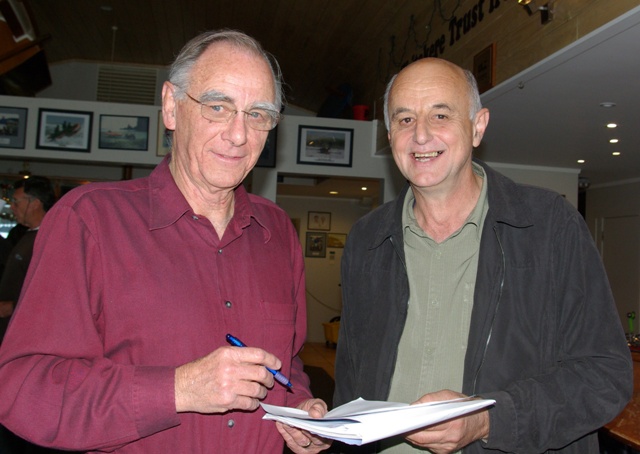About 25 turned up at Piha surf club on Saturday 25 August 2013 to hear dune ecologist Jim Dahm of Eco Nomos talk about his study of the sand dunes at Piha beach, and recommendations for ongoing management. Also in attendance were Waitakere Ranges Local Board members Judy Lawley, Greg Presland and Neil Henderson, Councillor Sandra Coney, and Parks West management and staff.
Dahm is looking for feedback to improve the document but before that he ran through his findings. He impressed that you can’t understand what is happening at Piha without understanding the wider area. Unlike the East Coast, Piha is part of an enormous sand system that stretches from Taranaki to the far north. Large “slugs” of sand are moving northwards along the coast; when this sand movement encounters an obstacle, such as a river mouth or harbour entrance, the bigger the sand slug that moves across. The huge, several kms wide sand accretion at Whatipu, was the result of a large slug moving past the Manukau Harbour entrance. It started in 1900 but rapidly accelerated from the 1930s. Estimated to include 6-8 million cubic metres of sand, clumps of sand are now moving north, some reaching Piha.
About 20,000 cubic metres a year reaches Piha. Altogether between 1940 and 2000, 1.2-1.5 million cubic metres of sand has arrived.
Shoreline advance is likely to continue at Piha for some time, Piha is not the sand’s final destination and it will continue to move north. In the meantime, there have been changes in the beach resulting in the loss of the “reform” or “ditch” by the Beehive.
The health of Piha dunes have improved dramatically since 2000, which Dahm puts down largely to the replanting activities of Piha Coastcare.
Dahm explained that the narrower the width of the dunes, the more problem there will be of sand blowing over the top. Sand trapping plants such as spinifex at the toe of the dune will capture sand and prevent it from reaching the top of the dunes, so that dunes do not get higher.
Problems that Dahm found during his study:
- Misinformation, that surf changes were caused by the work on the dunes
- Consultation and communication, or lack of
- The impact of dune management on natural character
- Dunes affecting views from houses and carparks
- Lack of elevated grassed areas for viewing that some had advocated to him.
Dune restoration was necessary to repair human damage – we have to change the culture of people using the dunes, he said.
People need to come on board even though not all stakeholders’ needs can be met.
Dahm was quizzed during question by members of the audience, especially the surfers who attended, about whether the closing in of the Moana Stream, with channelising and an artificial dune across the entrance, could have made a difference to the way the beach worked and the quality of the surf. He conceded that it could have, though it was unclear how much. He would support some work at the stream mouth to restore a more natural function, in line with the recommendations of Judge Arnold Turner who conducted the hearing in which he retrospectively examined the work and judged that it was unnecessary.
Auckland Council Parks West was urged to bring back options regarding what could be done at the Moana Stream, and to keep the dialogue going between stakeholders.
Dahm will be gathering feedback on his report and refining his report before it goes to the Local Board.
To see an earlier report with link to Jim Dahm’s report Piha South Road Reserve Dune Management: Review and Proposed Management Plan go here https://www.piha.co.nz/piha-coastal-day-discuss-the-beachfront/



